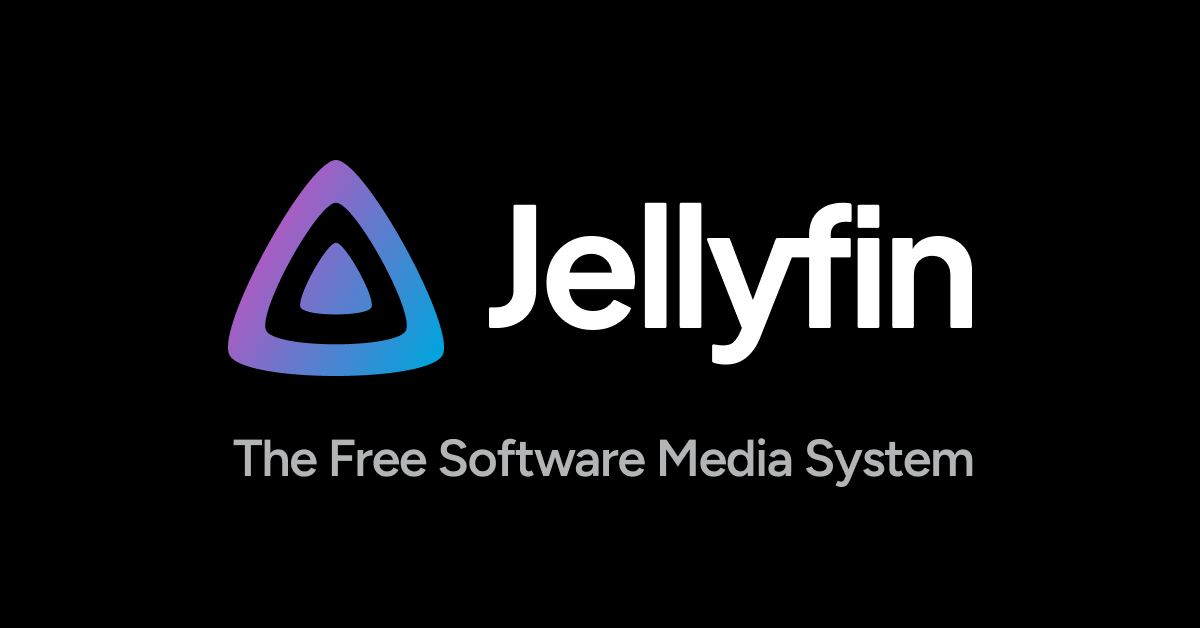- cross-posted to:
- [email protected]
- cross-posted to:
- [email protected]
I rate it a 10.10.0 out of 10.
Jellyfin has been rock solid for me, especially since the move to .NET 8. Looking forward to this release.
I am loving the new release cadence!
I see Jellyfin, I insta upvote
I just setup Jellyfin on docker the other day for the first time.
It just occurred to me that I don’t know how to update docker.
Any advice?
Check out Watchtower! Auto-update your containers. Don’t forget to set WATCHTOWER_CLEANUP to true, or your disk will be filled with old images.
I couldn’t figure out watchtower. I just made a script to pull and restart and scheduled it to run daily at midnight.
Oh this looks great! Thanks for the suggestion
Thanks! I’ll check that out, I’m really loving how quick and easy docker has been so far.
Did you use docker compose file or just run a command to start the container?
Edit: I always use compose files. For that you can do the following:
docker compose pull docker compose down docker compose up -dYou don’t technically need the stop, but I’ve found once or twice in the past where it was good to stop because of image dependencies that I forgot to put in my compose.
For running a command directly I found this website that seems to summarize it pretty well I think:
https://www.cherryservers.com/blog/how-to-update-docker-image
Yes, I used docker compose. Do I need to do anything to clean up with this method?
Now that you mention it, I always do a
docker system prune -fThis will clean up old images that are no longer used. I setup an alias command in Linux to do all of those commands.
I just named it docker_update and saved it in my ~/.bashrc
I see someone mention watchtower, while not a bad thing, I just prefer to manually update. This helps to ensure any breaking changes don’t break my system. Especially with something like Immich at it’s had a lot of them recently as they work towards stable. I just generally subscribe to their release and do updates as necessary.
And there are breaking changes in this Jellyfin release.
You could use a systemd unit file:
[Unit] Description=docker_compose_systemd-sonarr After=docker.service Requires=docker.service [Service] TimeoutStartSec=0 WorkingDirectory=/var/lib/sonarr ExecStartPre=-/usr/bin/docker compose kill --remove-orphans ExecStartPre=-/usr/bin/docker compose down --remove-orphans ExecStartPre=-/usr/bin/docker compose rm -f -s -v ExecStartPre=-/usr/bin/docker compose pull ExecStart=/usr/bin/docker compose up Restart=always RestartSec=30 [Install] WantedBy=multi-user.targetYou’d place your compose file in the working dir
/var/lib/sonarr. Depending on what tag you’ve set for the image in the compose file, it would be autoupdated, or stay fixed. E.g.lscr.io/linuxserver/sonarr:latestwould get autoupdated whereaslscr.io/linuxserver/sonarr:4.0.10would keep the container at version4.0.10. If you want to update from4.0.10, you’d have to change it in the compose file.deleted by creator
If you set up using compose and don’t have the version pinned:
dockee compose down && docker compose pull jellyfin && docker compose up -dWhat about if I am using Podman and have the container as a systemd unit file?
Podman supports auto updating natively by setting a label.
I use systemd service files for running containers, but you can add the same label on the command line or in quadlet files.
Also depends on how you specified image in the docker. If it has no version or latest as version it will update otherwise it may be fixed
I really like JF.
My biggest issue with it is that subtitles appear to be messed up timing wise upon continuing playback and its impossible to reset.
But other than that, I like it a lot. Thanks JF team!
Interesting, I haven’t had issues with subtitles. Lately, I haven’t been getting any subtitles.
Shame about the network location regression. That’s the only thing that keeps my kodi device from taking 5-15 seconds to load each sub menu.
What’s this about? I didn’t hear anything about it.
Network paths in libraries have been fully removed and will no longer work. This functionality has been deprecated for a long time, and most of it was removed in 10.9.0, but this removes the remainder. See PR #12446. Third-party clients relying on this functionality should be able to re-implement it as required.
from the article.
I just recently converted from kodi to jellyfin after a Nas hardware crash. I run the server in a docker container on my Nas and the client on a Nvidia shield. Works great, but there is one niggle I haven’t figured out and had much better experience on kodi. Subtitles.
I can’t seem to find any adjustments for the subtitles in case they don’t fit the video completely. There is no menu I have found that allows for adjusting the timing of subtitles.
How are you all coping with this? I use the arr stack and get subtitles through bazarr.
How do you all handle these things?
Probably a bad time to suggest the Jellyfin for Kodi plugin (since they removed the network paths in this version) but it’s what I use for my main playback device.
All the goodies of playback via Kodi but play state and metadata gets synced from Jellyfin.
Another option of course would be to open the file(s) in MKVToolNix to add and correct the subtitle offset there.
Is that the native paths method they removed? I never used it and didn’t understand the reason for it, but I’m guessing its useful for some users?
Yep. Kodi slows down significantly if you have a large library and play through the addon. Native paths fixed that issue by playing directly from a network share instead.
Right gotcha. My library is only a few TB so I guess it doesn’t cause issues for me.
Tbh I’m waiting for Findroid to officially released its android TV client and then if it works well I might switch over from Kodi
Are you using subtitle sync in bazarr? I don’t use jellyfin, but have found that bazarr has fixed most of my subtitles that were not in sync just by enabling the option. I think it’s CPU intensive though, so don’t do the whole library at once.
Depends on the platform you’re using. Mobile you have the integrated player that doesn’t support subtitle offset and the web player that does. Everything else is a version of the web player basically and they all support subtitle offset
Nvidia shield is a android device so it tracks that this is the mobile player without srt adjustment. That sucks though. Maybe I should look at kodi and jelly plugin…
If it uses he android client there should be a setting to choose which player, at least with mobilie there is.
On the client go to settings -> client settings -> video player
It might let you change it, you’ll want the web player.
Oh? Very interesting! I was not aware that this was available as a setting. Thanks for the heads up
Many major enhancements to transcoding and playback, including support for software tonemapping of HDR10, HLG and DoVi, preliminary support for DoVi Profile 10, support for Dolby AC-4 audio, more stereo downmixing algorithms, QSV device selection, and more! Our FFmpeg is also now based off the upstream FFmpeg 7.0 release for additional features and improvements there.
Does that mean no grey mess anymore when playing HDR files?
I liked Jellyfin when I tested it last year but it had 3 show stoppers for me.
- Samsung app was flakey and had to be side loaded.
- Each profile had to use a password and had a full keyboard to enter. Needs a no password option, and a pin pad option.
- Not everything played successfully.
Have any of these things been fixed?
1: The official Android app didn’t work?
That’s strange as I run it on a Samsung and Pixel straight from the PlayStore. What were your problems?2: This is not required as long as the profile is set up wthout a password.
3: This depends on the client and codecs supported by it. Newer phones support most, or is able to transcode. Weaker/older units are not.
They’re probably talking about Samsung TVs, not their android phones/tablets. Installing jellyfin on those things can be a chore. My experience with LG was similar. The official build was out of date and riddled with issues that didn’t exist on other versions. It refused to play videos that worked well enough on other devices, transcode or no.
That thought didn’t cross my mind, and you must be right.
I’d say go for a streamer of some sort as a solution. Not had many issues on the CCWGTV.
Yeah tizen based TV. So no android apps.
Speaking to #2, I’m surprised since I always use the “sign in from another device” feature, where I punch some numbers into the app on my phone and it signs me into the tv.
That said, the tv is running the desktop app.Not seen that option, it.might be useful. However, If I move from Plex it needs to be familiar to everyone else in the house. Retraining them is tricky.
Echoing @[email protected], I downloaded the first party app right from the Play Store on my Samsung. Though I prefer the third party, Findroid, the first party app is good for the dashboard management.
When we launch Jellyfin, we are shown icons for what user, we select the user, and it opens the associated library. Similar to Netflix.
I started using Jellyfin about two years ago now, and have only encountered a codec issue here and there, but I’ve found it can be worked around by setting playback to another player, like VLC.
- Not sure what you mean by that. Jellyfin has had an up to date version in the play store for years.
- Yes every Profile is separated into its own account, that’s by design and will most likely never change. An easy PIN option in the local network existed for years. Now you can even login with your phone app by entering a displayed PIN.
- I remember very few media that i had issues with in the past. Depending on the transcode hardware you have some things can be tricky
They are talking about the Samsung Tizen app for Samsung TVs.
I tried Jellyfin recently and for some reason it doesn’t play any media at all when I disable hardware transcoding, even though my media all is 1080 h264/h265 and I don’t want to scale. On Plex it always seemed like I could just play everything natively, but Jellyfin seems like it always wants to transcode.
Even if I enable transcoding, stuff won’t play nicely because I’m currently on a Pi4 (going to switch in the coming weeks to a proper server), but Plex is fine.
Basically, when you do not run server side transcoding and instead rely on client side support you will run from time to time into issues. Jellyfin does not have the ppl to get every client to work with all the different formats on every hardware.
1080 h264/h265 does not say much about the media format. Those codec differentiate in things like Chroma (4:2:0; 4:4:4, etc) or in color depth like 8 or 10 bit. So not every h264 media file does run on the same hardware. Audio codecs are even more complicated.
I think since i setup my hardware transcoding I ran into a not playable file once. But depending on the hardware it can be worse. On android TV you may have to play around with the settings.
I understand that this can be a deal breaker for some ppl.
Wtf is a Samsung app?
Samsung TVs
For the not all media played successfully, I found it was primarily down to transcode settings trying to hardware transcode file types my server can’t hardware transcode. It’s something worth playing with
goal to remove 32-bit ARM support in 10.11.0
I’m still running jellyfin on a rPI 2, performance is not great but not too bad either. Maybe it could be an excuse to finally upgrade my hardware.
Last time I updated I had to set all my user accounts again :(
Intro-skipping is build-in now? Did I get this right? I thought they decided against it?
It isn’t built in to JF; they just added a framework that makes the process easier. You’ll still have to use a plugin to skip intros.
Ah, ok. Very nice!
Can we give music more than one tag yet?
Last time I tried it it was a much worse experience than Emby across all devices and for all media types. I don’t understand all the love it gets.
Worse how? Jellyfin was forked from Emby, and since then has continued to improve in my eyes.
It was forked but somehow lacked a huge amount of functionality that Emby had (and still has) Like I think it only supported films, not music or TV shows. The app infrastructure was awful across fire stick, Roku and android and wasn’t backward compatible with the Emby apps. I just didn’t see the point of forking it if you’re just going to make it worse or only address the server side and neglect the clients. The whole thing has to work together with good clients and server.
Jellyfin has supported Music and TV shows since the start
Looks like you need a closer view about actual functionality. Jellyfin supports movies, tv-shows, music (there are also apps just for music), e-books and live-tv.
I kinda wonder how I’ve been watching shows for years, then…
Yeah jellyfin still has a number of issues that should be worked on, but it’s nowhere near as bad as you claim
It’s free and open source. That alone is a big plus. And it works fairly well. What does emby do better, that warrants paying $120 for it?
I haven’t paid anything for it
As I need hardware transcoding, that makes emby immediately non viable for me. I also usually watch via various apps and on tv, which, if you don’t have emby premiere are also not free to use.
Stepping aside from this particular thread for a moment. Could you share why you need hardware transcoding?
Admittedly, I don’t quite understand what components would build a better machine as far as a media server goes, but I turned off hardware transcoding when I first set Jellyfin up on a NUC. The only issues I have are the startup speed of the app, and every now and then it crashes when loading the library and I just relaunch it and it’s fine.
I’ve assumed it’s the Nvidia Shield doing the heavy lifting as far as playback goes, because I’ve never had a recurring problem with playing any particular file. I’m starting to think I don’t really appreciate the benefits of hardware transcoding.
I regularly watch on my server when I’m not home and a few friends of mine also have access to it, so I need the content to be available in SDR and lower bit rates. When I stream from home, I‘d like to have access to the full quality and HDR though, so either I need multiple versions of each film or hardware encoding/tonemapping and a used gtx 1050ti was a lot cheaper than the required storage would be to have 4 or 5 versions of every film.
But yes, if you’re only streaming within the same network, hardware transcoding isn’t necessary in the slightest. But then a SMB fileshare might also suffice…
Ah I completely forgot streaming away from home. My travels tend to have limited internet access, and so my practice is to download things we might watch through Findroid.
Given your friends have access to your library, what do you think would be required (ideally) for streaming to work without transcoding? As simple as a beefy internet connection, a 4k screen and them having a Shield or equivalent?
I only ask because I know a number of my circle use Shields already and I think the ones in my neighbourhood are all on gigabit connections. Might be worth looking into so long as I’m not in for upgrading the machine. I’m more of a set and forget person myself.
Well, my internet connection would have to be a lot faster, and they would all need devices that support UHD h.265 and HDR10 playback. But if you have have gigabit upload and they all have shields or similar with just as fast connections, you’re good to go without transcoding (if no one wants to access it through mobile)
Probably bandwidth and client device power limitations. Maybe they are using an old tv with a jellyfin app so it doesn’t support 4k video files / new codecs.
when did you last try it and what clients? I’ve got friends/family accessing my library and I see them playing back stuff constantly and never seen or heard of any issues. This is across web, AndroidTV, Chromecast, Roku and mobile devices.















